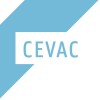
Desmopressin Melt Therapy in Nocturnal Polyuria Patients: Pharmacodynamic Study
NocturiaThe objective of this study is to find out what the pharmacodynamic (PD) characteristics of desmopressin melt are in nocturia patients (compared to healthy volunteers and children). The main questions the investigators want to answer are: Are differences related to the pathophysiological factors involved in nocturia? Are there age/gender/size differences? Can the investigators identify patients who are likely to develop hyponatraemia? Can the investigators individualize treatment and reduce risk for hyponatraemia? The patient will be given a prescription to buy Minirin Melt 60µg at the local pharmacy. During 30 days, the patient has to take Minirin Melt 60µg in the evening before going to bed. There are two groups of patients: Group A: Patients that still have to undergo an evaluation phase, according to standard procedures (e.g. osmolality test, blood sample). This procedure is not a part of this study. The study starts when the 1st Minirin Melt tablet has been taken (= day 1). Group B: This group already went through the evaluation phase (by participation to study 1 or study 3 as mentioned above) and they have been prescribed Minirin Melt 60 µg ambulatory. The study starts when the patients takes his first prescribed Minirin Melt tablet: On day 3 and day 7 a blood sample will be taken at the UZ Ghent for safety control (Na+, K+, creatinin, osmolality = good clinical practice guideline). These first 2 visits (day 3 and day 7) are standard procedure. If the patient is at high risk for side effects, blood has to be taken during the first 7 days. On day 3 the patient has to give a urine sample. Patients have to fill out a frequency/volume chart during the first 14 days. On day 30, a 3rd blood sample will be taken

Efficacy and Safety of Gabapentin in Treating Overactive Bladder
Urinary UrgencyUrinary Frequency4 moreOveractive bladder (OAB) syndrome as defined by International Continence Society is a pathological condition characterized by irritative symptoms: urinary urgency, with or without incontinence, urinary frequency and nocturia. The syndrome often seriously compromises the quality of life of the patients. The etiology of the OAB is considered multifactorial. Neural plasticity of bladder afferent pathways is one of the proposed mechanisms of OAB. The detrusor muscle itself has for many years been the target for drug treatment such as antimuscarinics. However, depression of detrusor contractility, may results in a reduced ability to empty the bladder and lead to some sympathetic adverse effects, which limits the treatment of OAB. Currently the focus of OAB treatment has changed to other bladder structures/mechanisms, such as afferent nerves and urothelial signaling as targets for intervention. C-fiber bladder afferents nerves may be critical for symptom generation in pathologic states such as OAB because these fibers demonstrate remarkable plasticity. Up-regulation of bladder C-fiber afferent nerve function may also play a role in urge incontinence, overactive bladder (OAB) and sensory urgency. The mechanism of Gabapentin's action for neuropathic pain has not been fully elucidated but is appears to have inhibitory activity on afferent C-fibers nerve activity; moreover, several studies had established the safety of Gabapentin in its treatment of different conditions. Due to the proposed mechanism, the investigators suggest that Gabapentin may be a new alternative for treating OAB.

VA106483 Dose Response Study in Elderly Males
NocturiaThe main purpose of the study is to evaluate the way VA106483 enters and leaves the blood and tissues over time and how the drug acts on and in the body at various dose levels compared to placebo in the same volunteer.

A Study of Silodosin 8 mg Daily for the Treatment of Nocturia in Men With Benign Prostatic Hyperplasia...
NocturiaProstatic HyperplasiaSilodosin is compared to placebo to determine if it is safe and effective for the treatment of nighttime urination (nocturia) in men with BPH

Efficacy Study of VA106483 in Males With Nocturia.
NocturiaTo investigate the effect of VA106483 on nocturia related clinical outcomes compared to placebo.

Study in Healthy Male Subjects to Evaluate the Effect of Itraconazole and Rifampicin on the PK of...
NocturiaThe purpose of this study is to investigate the potential for co-administration of strong inhibitors or inducers of CYP3A4 to alter the pharmacokinetics of fedovapagon.

Interventional Clinical Trial in Patients in Overactive Bladder With Nocturia in Women
Overactive BladderThe purpose of the trial is to investigate the efficacy of combining tolterodine and desmopressin compared with tolterodine monotherapy in the treatment of women with overactive bladder with nocturia in terms of reduction of nocturnal voids during 3 months of treatment

Efficacy and Safety of Silodosin on Nocturia for Patients With Benign Prostatic Hyperplasia
NocturiaBenign Prostatic HyperplasiaThe objective of this study is to determine safety and efficacy of silodosin, which is a treatment for benign prostatic hyperplasia with high selectivity to α1A-receptor, on patients with benign prostatic hyperplasia accompanied by nocturia.

Dose Range Finding Study of Fedovapagon in Men With Nocturia
NocturiaThe purpose of this study is to determine the dose level(s) of fedovapagon which result in a decrease in the mean nocturnal void frequency.

Trial Investigating the Long Term Safety and Tolerability of Desmopressin Orally Disintegrating...
NocturiaDemonstrate the safety and tolerability of desmopressin ODT during long-term treatment of subjects with nocturia due to nocturnal polyuria, for up to 1 year
